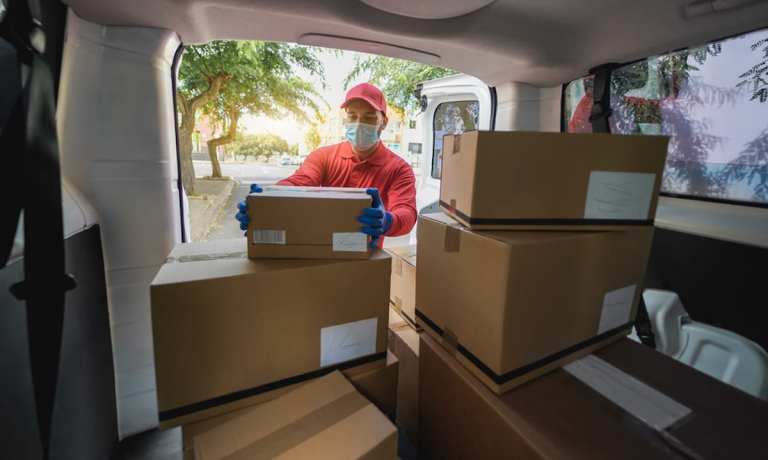
As many people around the world wait to receive the vaccine, most consumers continue to favor off-premises dining. In fact, in the U.S. alone, consumers spent about $486 billion on food eaten at home in 2020, according to estimates in PYMNTS’ Delivering on Restaurant Rewards Tracker. As restaurants’ physical presence plays an increasingly small role in consumers’ dining decisions, many restaurants have been favoring ghost kitchens and virtual kitchens, optimizing their real estate to focus on preparing food and fulfilling orders.
Hot dog QSR chain Nathan’s Famous, Inc. has just opened up its 100th ghost kitchen since June, with 45 more locations coming in the near future, according to a company news release. These kitchens focus on creating food that is “memorable, craveable and instagrammable.” These ghost kitchens include both the traditional Nathan’s menu as well as chicken offerings from Wings of New York, Nathan’s virtual-only chicken wing brand. The kitchens exist in partnership with independent restaurants, giving eateries the opportunity to make and sell Nathan’s products on third-party delivery apps with their existing kitchens and infrastructure — a culinary side hustle with the potential to provide much-needed extra revenue.
As the model becomes increasingly popular, new tech solutions emerge to lower the barrier of entry for ghost kitchen setup. Tech company Zuul (named after a “Ghostbusters” ghost) has been providing its ZuulOS ghost kitchen tech to a wide range of restaurants, reports QSR Magazine. Multi-restaurant companies have been using the technology to offer all their menus from one location. Food purveyors typically kept out of the delivery ecosystem, such as caterers and food halls, have also been using the company’s software to establish a delivery presence.
The turn toward delivery-only restaurants is unsurprising, given consumers’ current preference for off-premises dining. In 2020, ordering food for takeout or delivery became consumers’ fallback meal plan, according to PYMNTS’ Delivering on Restaurant Rewards research. Digital purchasing channels played a key role in the rise of the takeout-centric restaurant industry. Of the $486 billion that consumers spent on food eaten at home in 2020, $434 billion — 89 percent — was spent on orders placed via websites, mobile apps and aggregator apps.
However, some theorize that this mass proliferation of ghost kitchens is a bubble, soon to be popped. “You can’t keep just throwing up virtual brands – at some point, there’s saturation,” Dan Fleischmann, vice president of venture capital firm Kitchen Fund, told CNBC, later adding that “it’s still such a low-margin business to begin with; the owner taking 30 percent out and then having to go through an aggregator like DoorDash or Uber Eats is really difficult.” Other industry leaders agreed with Fleischmann, arguing that rising prices would defeat the business model and that many virtual restaurants have focused more on offering short-term, trendy appeal than creating long-term value.
Others are more optimistic about the future of the concept. Dark kitchen chain Wow Bao is continuing to expand, planning to grow from 150 locations to 1,000 by the end of the year. Last week, Silicon Valley shopping center Westfield Valley Fair, a shopping center in Silicon Valley, partnered with Kitchen United, a ghost kitchen company, to use conveyor belts and pickup lockers to fulfill pickup and delivery orders from a wide range of restaurants all at one location. In November, QSR giants Chipotle and Red Lobster both unveiled ghost kitchens, while chains such as McDonald’s and Starbucks have been piloting digital-only kitchens since pre-pandemic.
There may be cause for that optimism. At the moment, the December edition of Delivering On Restaurant Rewards found that “eighty-seven percent of all consumers who have shifted to ordering food online since the pandemic began plan to keep doing so at least ‘somewhat’ as often as they do now. This compares to 78 percent of digital shifters who plan to keep retail shopping online and 71 percent who plan to keep grocery shopping online.” Additionally, a recent study highlighted in our December Mobile Order-Ahead Tracker found that digital orders will make up 54 percent of QSRs’ sales by 2025, marking a 70 percent increase over values outlined in studies published before the pandemic’s onset. Restaurants of all types — even those that previously did not offer mobile ordering — have shifted to digital channels amid social distancing orders and dining room shutdowns, and customers have now incorporated these ordering methods into their daily lives.
There is also the possibility for brands that have developed name recognition through their ghost kitchen offerings to establish brick-and-mortar locations when consumers feel comfortable eating in-store. Many digital-native brands have successfully established a physical presence in the past. Ghost kitchens may give these brands an opportunity to develop a following before making the sizable investment of opening up a physical restaurant. Whether these ghost kitchens serve as a launchpad for future brick-and-mortar restaurants — whether they capitalize on the growing future of delivery, or whether they lose steam as consumers trickle back into their pre-pandemic favorite restaurants — the efficiency of the concept for cost-conscious restaurants and COVID-conscious consumers is undeniable.